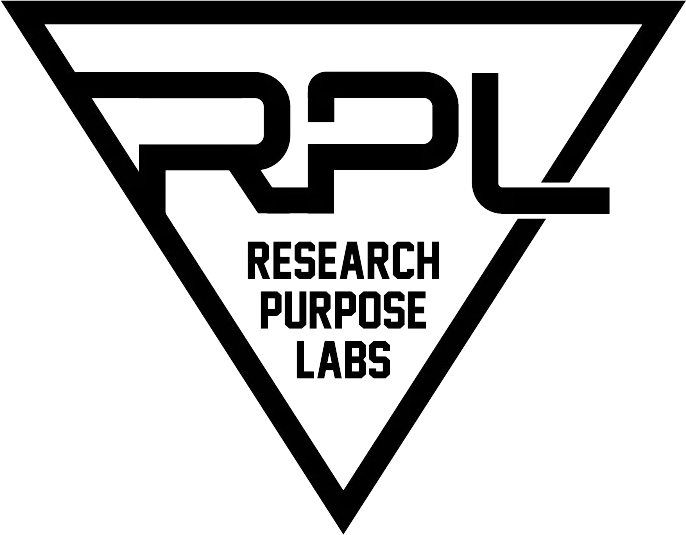Lyophilized/Freeze-Dried Peptide Reconstitution
Activating Peptides for Laboratory Use
Peptides typically arrive in the form of freeze-dried powder to ensure stability and longevity. This freeze-drying process, called lyophilization, extracts water by first freezing the compound, then reducing the surrounding pressure to allow the frozen water to sublimate directly from ice to vapor. The appearance of lyophilized peptides can range from a tiny, white disc that’s either fluffy or grainy, variations that result from differing freeze-drying methods.
Activating Lyophilized Peptides To prepare them for laboratory use:
Lyophilized peptides must first be activated, or reconstituted, by introducing them to a liquid medium. While bacteriostatic water (available here) serves as an effective reconstitution agent for most peptides, finding a universal solvent that dissolves all peptides without compromising their stability or effectiveness in experiments can be challenging.
Researchers may need to experiment with a variety of solvents, starting with the least complex, often bacteriostatic water. It’s essential to avoid using Sodium Chloride water, as it can interact negatively with certain peptide components.
The solubility of peptides is primarily determined by their polarity. Acidic solutions can be used for basic peptides, while peptides with hydrophobic tendencies, or those with several uncharged polar amino acids, might require an organic solvent, such as acetic acid or DMSO, albeit in limited quantities.
After finding a suitable dissolution solvent, further dilution with sterile or bacteriostatic water is advised. It’s important to note that peptides with methionine or cysteine should not be initially dissolved in DMSO due to potential oxidation issues.
Guidelines for Peptide Activation: The process starts with choosing solvents that can be easily removed if necessary, allowing for re-lyophilization if the peptide doesn’t dissolve. An initial trial with bacteriostatoc water or a dilute acetic acid solution (0.1%) is recommended. Testing a small sample of the peptide in the selected solvent can prevent wasting the entire batch if solubility is an issue.
Upon unsuccessful dissolution, the peptide can then be tried with progressively more potent solvents. Preparing a concentrated stock solution in a sterile solvent allows for easier adjustment of the peptide’s concentration for assays.
Employing Sonication If undissolved particles remain, sonication can sometimes facilitate dissolution by disintegrating solid peptide clumps. This method doesn’t alter the solubility properties but can achieve a more homogeneous solution. After sonication, any observed cloudiness or particulate matter indicates that the peptide may still be suspended, not dissolved, signifying the need for a different solvent.
Laboratory Reconstitution Steps Although some peptides require more potent solvents for complete dissolution, bacteriostatic water serves as an effective starting point for most peptides. Here’s a general protocol for peptide reconstitution in the lab, intended as an overview rather than a specific guide:
*Important: Let the peptide adjust to room temperature before opening to maintain its integrity.
Reconstitution Using Bacteriostatic Water:
- Unseal the peptide container by removing the plastic cap to reveal the rubber stopper.
- Repeat the process with a vial of bacteriostatic water.
- Sanitize the stoppers with alcohol to prevent contamination.
- Withdraw 5mL of sterile water from its vial.
- Carefully add the 5mL of water to the peptide vial, allowing the liquid to blend slowly.
- Stir the mixture gently until fully dissolved, avoiding vigorous shaking.
- When you reconstitute anything for research, you simply divide the number of mg of research compound you added to the bacteriostatic water by the number of milligrams of bacteriostatic waterFx: 3ml of bacteriostatic water added to 10mg of peptide = 3.33 mg of peptide per ml of solution. You can access a reconstitution calculator here: https://peptidecalc.com/
You can fund our bacteriostatic water at this link
Optimal Peptide Storage Guidelines
Ensuring the longevity and reliability of laboratory outcomes necessitates meticulous storage of peptides. Proper storage techniques are crucial for preserving peptides indefinitely, protecting them from contamination, oxidation, and degradation that could otherwise invalidate your peptides and experiments. Although some peptides may be more prone to degradation than others, adhering to optimal storage guidelines can significantly extend their stability and integrity, irrespective of their specific make-up.
Upon receipt of peptides, it is crucial to store them in cool, dark conditions. For immediate or short-term use (days, weeks, or a few months), storing peptides at refrigeration temperatures below 4°C (39°F) is typically sufficient. Lyophilized peptides, given their stability, can remain at room temperature for several weeks without issue, making this an appropriate option for peptides needed within a short timeframe.
For extended storage durations (several months to years), freezing peptides at temperatures around -80°C (-112°F) is highly recommended to best maintain their stability over time.
It is also essential to minimize the number of freeze-thaw cycles, as each cycle increases the likelihood of peptide degradation. Furthermore, peptides should not be stored in frost-free freezers, as the temperature variations during the freezer’s defrosting cycles can lead to instability.
By following these guidelines, you can assure the preservation of peptide integrity for both near-term and long-term research applications.
